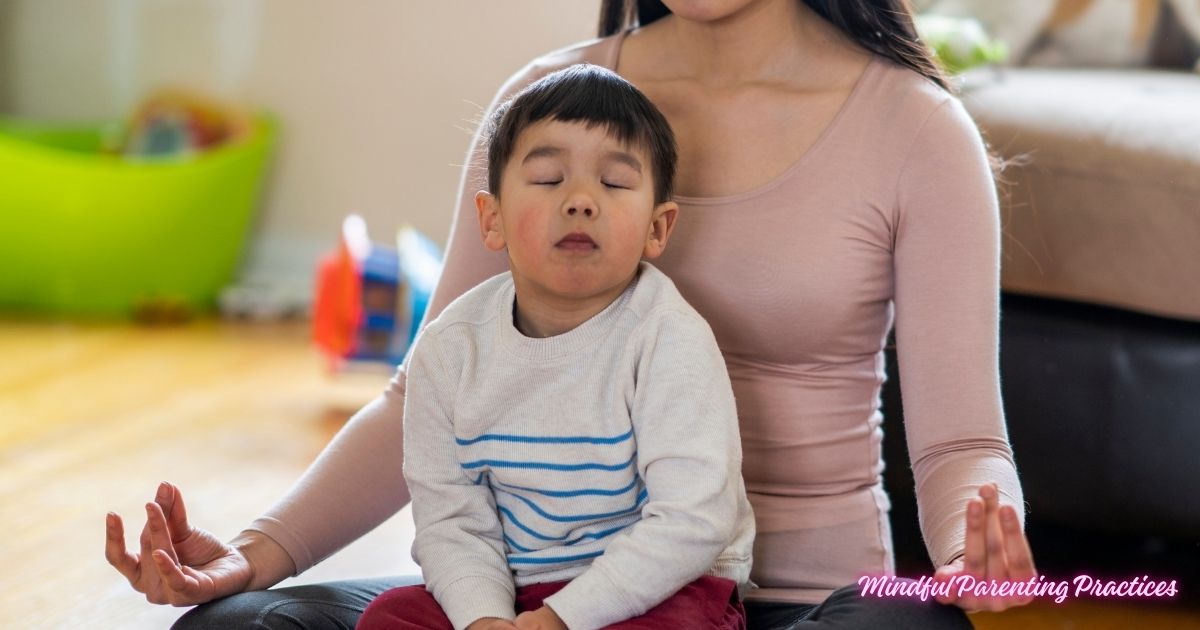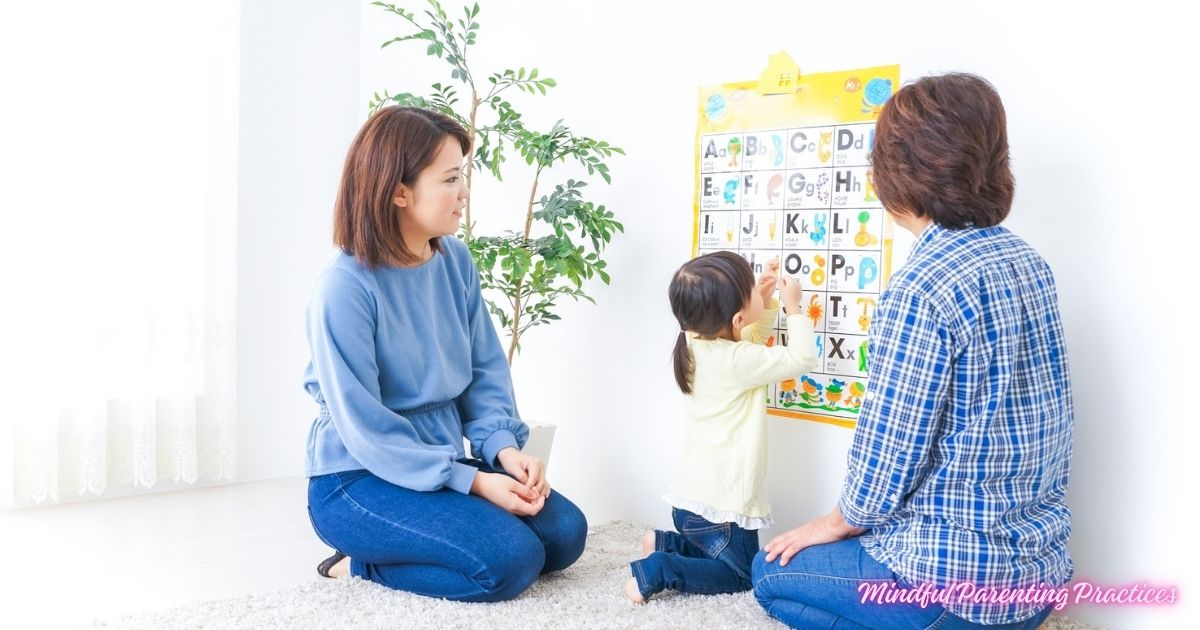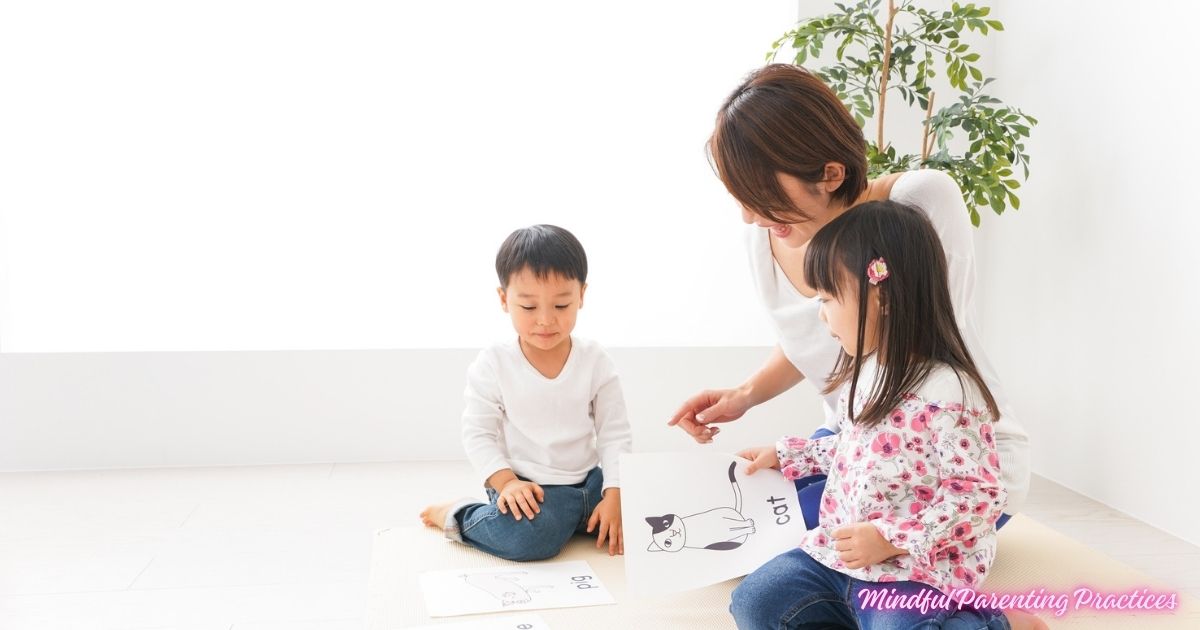
Mindful Parenting Practices: Cultivating Presence and Connection
Mindful Parenting Practices
Cultivating Presence and Connection
Mindful Parenting Practices – Parenting is a journey filled with love, challenges, and countless moments of growth. In today’s fast-paced world, it’s easy to get caught up in the hustle, leaving little room for true connection with our children. Mindful parenting offers a way to slow down, be present, and foster deeper relationships with our kids.
Mindfulness in parenting is about being fully engaged in the present moment without judgment. It means listening with intention, responding with patience, and creating a nurturing space where both parents and children feel valued. Through mindful parenting, families can cultivate a sense of calm, understanding, and emotional well-being.
What is Mindful Parenting?
Mindful parenting is the practice of bringing awareness, presence, and compassion into everyday parenting moments. Rather than reacting impulsively to challenges, mindful parents respond thoughtfully and with empathy. This approach helps children develop emotional intelligence, resilience, and a stronger bond with their caregivers.
Mindfulness in parenting does not mean being perfect or always staying calm. Instead, it’s about acknowledging emotions, practicing self-awareness, and making conscious choices that align with love and understanding. It allows parents to break free from autopilot mode and embrace the beauty of raising children with intention.
The Benefits of Mindful Parenting
1. Stronger Parent-Child Connection – Mindful Parenting Practices
Mindful parenting creates a deeper bond by ensuring that children feel heard, seen, and understood. When parents are fully present, children develop a sense of security, which strengthens their emotional well-being.
Read also – Slow Parenting: A Gentle Approach to Raising Happy Children

2. Reduces Parental Stress
Parenting can be overwhelming, but mindfulness helps reduce stress by encouraging parents to take a step back and approach challenges with a calmer mindset. By practicing deep breathing and awareness, parents can handle difficult situations with greater ease.
3. Encourages Emotional Regulation
Children learn how to manage emotions by observing their parents. When parents respond with patience and mindfulness, children naturally adopt these practices, leading to better emotional regulation and self-control.
4. Promotes Positive Discipline
Rather than reacting with frustration, mindful parenting encourages thoughtful responses. This approach helps parents guide their children with kindness, teaching them valuable lessons without unnecessary conflict.
5. Enhances Self-Awareness – Mindful Parenting Practices
Mindfulness allows parents to become more aware of their own emotions, triggers, and behaviors. By recognizing their patterns, they can make adjustments that foster a healthier and more harmonious family dynamic.
How to Practice Mindful Parenting
1. Be Present in the Moment
One of the simplest yet most powerful aspects of mindful parenting is being fully present. Put aside distractions, turn off devices, and focus on your child during interactions. Whether it’s reading a book together or having a conversation, giving your full attention strengthens your bond.
Read also – Kidspot Recipes Dinner: Easy and Delicious Meals for Families
2. Practice Deep Listening – Mindful Parenting Practices
Mindful listening means truly hearing what your child is saying without interrupting or forming a response while they speak. Validate their feelings by acknowledging their words and emotions. This helps children feel respected and understood.
3. Pause Before Reacting
When faced with challenging behavior, take a deep breath before responding. This simple pause allows you to approach the situation with calmness rather than reacting out of frustration. Modeling this practice teaches children how to manage their own emotions effectively.
4. Cultivate Gratitude
Focusing on gratitude helps shift the perspective from stress to appreciation. Encourage a daily practice of sharing things you and your child are grateful for. This fosters a positive outlook and strengthens emotional resilience.
5. Set Realistic Expectations
Parenting is not about perfection. Accept that mistakes will happen—both for you and your child. Embrace the learning moments and practice self-compassion when things don’t go as planned.
6. Use Mindful Breathing Techniques
Teaching and practicing mindful breathing can be beneficial for both parents and children. Simple techniques like deep belly breathing or counting breaths can help manage stress and bring a sense of calm during overwhelming moments.

7. Engage in Mindful Play
Playing with your child without distractions creates an opportunity for genuine connection. Whether it’s building with blocks, drawing, or storytelling, engaging in play with full attention enhances your relationship.
8. Model Emotional Awareness – Mindful Parenting Practices
Children learn emotional regulation from their parents. Express your emotions in a healthy way and use words to describe your feelings. This teaches children how to identify and express their emotions constructively.
9. Create Daily Rituals
Simple rituals like bedtime stories, morning hugs, or evening reflections create consistency and comfort. These mindful moments help children feel secure and valued in their daily lives.
10. Practice Self-Care – Mindful Parenting Practices
Mindful parenting starts with taking care of yourself. Prioritize activities that nourish your well-being, such as exercise, meditation, or hobbies. When you feel balanced, you can show up as the best version of yourself for your child.
Overcoming Challenges in Mindful Parenting
1. Dealing with Frustration
No parent is immune to frustration. When emotions run high, take a step back, practice deep breathing, and remind yourself that you’re doing your best. Mindfulness helps transform frustration into patience and understanding.
Read also – Birth Injury Law Firm – All you need to know
2. Handling External Pressures – Mindful Parenting Practices
Society often places unrealistic expectations on parents. Let go of comparisons and focus on what works best for your family. Mindfulness encourages you to trust your instincts rather than feeling pressured by outside opinions.
3. Finding Time for Mindfulness
Busy schedules can make mindfulness feel like an added task. Instead of setting aside long periods, incorporate mindfulness into daily moments whether it’s mindful eating, deep breaths in traffic, or a gratitude reflection before bed.
Understanding Mindfulness
Mindfulness is the practice of being fully present in the moment, paying attention to thoughts, feelings, bodily sensations, and the surrounding environment without judgment. It’s a powerful tool for managing stress, improving mental clarity, and enhancing emotional well-being.
The Challenge of Time – Mindful Parenting Practices
One of the biggest barriers people face when it comes to practicing mindfulness is the lack of time. With busy schedules, family obligations, and work commitments, it’s easy to feel like there’s no space for personal care or mindfulness.
Incorporating Mindfulness into a Busy Schedule
The key to finding time for mindfulness lies in integration. You don’t need to set aside an hour each day to meditate. Here are some practical ways to weave mindfulness into your daily routine:
- Short Mindful Breaks: Even five-minute breaks during your workday can offer mental clarity. During these moments, focus on your breath, the sensations in your body, or the sounds around you.
- Mindful Walking: Whether it’s a walk to the mailbox or during lunch, use this time to engage your senses and become aware of the world around you. This can help reset your mind and reduce stress.
- Mindful Eating: Pay full attention to your meals. Savor each bite and notice the texture, taste, and smell of your food. This practice can also improve digestion and encourage healthier eating habits.
Mindfulness as a Natural Part of Daily Activities
Integrate mindfulness into routine tasks such as washing dishes, commuting, or folding laundry. These activities can be opportunities to practice presence, grounding yourself in the moment rather than being caught up in distractions.
Setting Intentions and Prioritizing Mindfulness – Mindful Parenting Practices
It’s essential to prioritize mindfulness, even if it’s just for a few minutes a day. Schedule it into your calendar if needed consider it a non-negotiable meeting with yourself. Remember, consistency is key.
Using Technology to Your Advantage
Use mindfulness apps, timers, or reminders to help you stay on track. Many apps offer guided meditations or short mindfulness exercises that can fit into any schedule.
Overcoming Guilt and Perfectionism
People often feel guilty for taking time away from work or family to practice mindfulness. It’s important to remember that self-care improves your productivity and overall well-being. Practicing mindfulness doesn’t need to be perfect; it’s about showing up for yourself, even if for just a moment.
Creating a Mindful Environment – Mindful Parenting Practices
Lastly, creating a peaceful environment at home or work can encourage mindfulness. This could mean decluttering your space, adding elements that promote calmness (like plants or soothing music), or setting boundaries that protect your time for personal care.
By recognizing the importance of mindfulness and integrating it into daily life in small ways, it becomes more achievable, even for the busiest individuals.

4. Managing a Child’s Strong Emotions
Children experience big emotions that can sometimes feel overwhelming. Rather than trying to fix their feelings, offer a listening ear and a safe space for them to express themselves. Your calm presence teaches them emotional resilience.
Understanding Strong Emotions in Children
Children, especially those under the age of 7, are still learning how to regulate their emotions. Their strong feelings whether it’s anger, sadness, frustration, or excitement can often feel overwhelming to them because they lack the skills to cope with them.
These emotions can manifest in outbursts, tantrums, or even withdrawal. It’s important to recognize that these feelings are valid, and the key is to help children learn how to express and manage them constructively.
Read also – Mesothelioma Compensation for Family Members
Stay Calm Yourself
When your child is experiencing strong emotions, your reaction is crucial. If you react with frustration or anger, it can escalate the situation. Instead, stay calm and composed. Your calm demeanor helps your child feel safe and supported. Take deep breaths, speak in a soft and steady voice, and maintain a neutral body language. Your child will often mirror your emotional state, so your ability to stay calm can help them regulate their emotions.
Acknowledge and Validate Their Emotions – Mindful Parenting Practices
One of the most important steps in managing strong emotions is acknowledging the child’s feelings. Validating their emotions helps them feel heard and understood, which can make a big difference in how they cope with their feelings.
- Use Empathy: For example, say things like, “I can see that you’re really upset right now,” or “It’s okay to feel angry sometimes.”
- Avoid Dismissing Feelings: Saying things like “You’re fine” or “Stop crying” may invalidate their experience. Instead, show empathy by acknowledging what they are feeling.
Offer Comfort and Reassurance
After validating their feelings, offering comfort is the next step. Hold your child, offer a soft touch, or sit next to them until they feel safe enough to begin calming down. Sometimes, a gentle hug or simply being present can provide them with the emotional support they need.
- Verbal Reassurance: Let your child know that it’s okay to have strong emotions and that you will help them through it. This can help your child feel secure knowing they aren’t alone in their emotional experience.
Encourage Deep Breathing – Mindful Parenting Practices
Once the child has calmed down a bit, guide them through some deep breathing exercises. Deep breathing helps regulate the nervous system and gives the child a tool to use when they feel overwhelmed by emotions.
- Breathing Techniques: Teach your child simple techniques, like breathing in for four counts, holding for four counts, and exhaling for four counts. You can make this a fun exercise by pretending to blow out candles or blowing bubbles.
Help Your Child Label Their Emotions – Mindful Parenting Practices
Helping children identify and name their emotions is a key part of emotional regulation. The more they can name their emotions, the better they can manage them. For example, ask questions like, “Can you tell me what made you feel upset?” or “How does your body feel when you’re angry?”
- Emotion Chart: Use an emotion chart or book to help your child visually recognize different emotions. This can give them the language they need to express their feelings.
Teach Problem-Solving Skills
Once your child is calm, guide them through problem-solving. Help them understand why they might have gotten upset and explore how to handle the situation differently next time. For example, if they had a tantrum because they couldn’t have a toy, talk about waiting patiently, asking for help, or using their words to express their needs.
- Offer Solutions: Help your child brainstorm possible ways to manage similar situations in the future. This can give them a sense of control and empower them to use better strategies when they feel overwhelmed.
Create a Calm-Down Space – Mindful Parenting Practices
Having a designated space where your child can go when they are feeling overwhelmed can be helpful. This could be a cozy corner with pillows, soft lighting, or calming toys. Teaching your child that they have a “safe space” to go to when they need a break can be an effective tool for managing strong emotions.
Read also – Pottery Barn Lamp Shades for Kids’ Spaces
Model Emotional Regulation
Children learn by observing their caregivers. So by modeling healthy emotional regulation, you can teach your child how to handle their emotions effectively. For example, if you are frustrated, take a moment to model deep breathing, say “I’m feeling frustrated, but I’m going to take a deep breath to calm down,” and then demonstrate how to manage your emotions.

Use Consistent Routines – Mindful Parenting Practices
Children thrive on routines because it provides them with a sense of security. Also consistent routines around sleep, meals, and play help reduce stress and prevent emotional outbursts. Predictability in daily life gives children the tools to feel safe and secure, making it easier for them to manage their emotions.
Avoid Punishment for Strong Emotions
While it’s important to set boundaries for behavior, punishing a child for experiencing strong emotions is counterproductive. Instead of punishment, focus on teaching them how to express their feelings in healthy ways. For instance, instead of saying “Go to your room for acting out,” try guiding them through their emotions with empathy and teaching them better ways to express their frustration.
Recognizing the Need for Support – Mindful Parenting Practices
Sometimes, children may struggle with emotions that are particularly intense or persistent, such as in cases of anxiety or behavioral disorders. If your child’s emotional struggles seem beyond what typical development suggests, it may be worth seeking advice from a child psychologist or therapist who can provide additional tools and support.
By offering empathy, teaching coping strategies, and modeling emotional regulation, you empower your child to handle their emotions in a healthier way. So with practice, children can develop the skills they need to navigate their feelings and understand themselves better.
Read also – Thrifty Frugal Mom – Navigating Budgets, Savings and a Purposeful Life

Frequently Asked Questions
Mindful parenting is the practice of being fully present, aware, and attentive in your interactions with your child, focusing on connection rather than discipline alone.
By practicing mindfulness, parents respond rather than react, foster empathy, and build trust, leading to stronger emotional bonds and better communication.
Techniques include active listening, pausing before responding, mindful breathing during stressful moments, and engaging in activities together without distractions.
Yes, mindful parenting encourages understanding the root of behavior, reducing reactive discipline, and promoting positive behavior through calm guidance.
Start small: dedicate a few minutes daily to focus entirely on your child, practice deep breathing, observe without judgment, and gradually incorporate mindfulness into routines.
Conclusion
Mindful parenting is not about being perfect it’s about being present. Also by practicing awareness, deep listening, and compassion, parents can foster a more connected and peaceful relationship with their children.
Incorporating mindfulness into daily life allows parents to respond with patience, nurture emotional intelligence, and create a home filled with love and understanding. Small, intentional steps toward mindfulness can lead to profound changes in both parenting and family dynamics.
Parenting is a journey, and mindfulness helps make that journey more meaningful, joyful, and fulfilling. By slowing down, appreciating the little moments, and approaching each day with intention, parents can truly embrace the beauty of raising children with presence and love.
